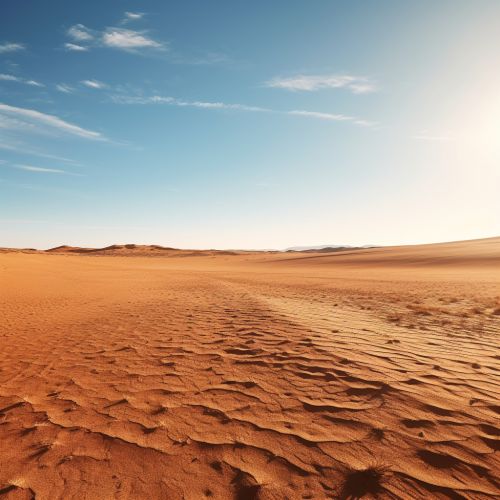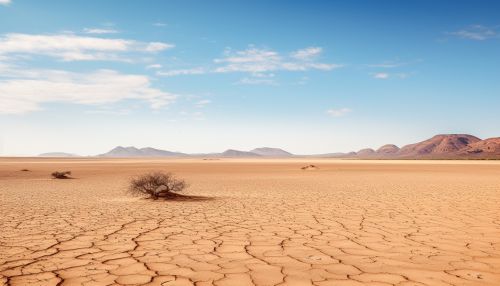Desertification
Introduction
Desertification is a type of land degradation in which a relatively dry land region becomes increasingly arid, typically losing its bodies of water as well as vegetation and wildlife. It is caused by a variety of factors, such as climate change and human activities. Desertification is a significant global ecological and environmental problem.


Causes
There are many factors that contribute to desertification, including both natural and human-induced causes.
Climate Change
Climate change is one of the main natural causes of desertification. Changes in the global climate, particularly the increase in temperatures, can alter the distribution and quality of rainfall. This can lead to periods of drought, which can severely affect the health of ecosystems, making them more susceptible to desertification.
Human Activities
Human activities are also a significant contributor to desertification. These activities include deforestation, overgrazing, and the overexploitation of land for agriculture. Deforestation often occurs as a result of logging or the clearing of land for agricultural purposes. This removal of trees can lead to a decrease in the amount of moisture in the soil, making it more susceptible to erosion and ultimately desertification.
Effects
Desertification has a number of negative effects on the environment and on human societies.
Environmental Effects
The environmental effects of desertification are significant and far-reaching. These include a loss of biodiversity, alterations to ecosystems, and a reduction in the land's natural resilience. The loss of biodiversity is particularly concerning, as it can lead to the extinction of species and the disruption of food chains.
Social and Economic Effects
Desertification also has serious social and economic impacts. It can lead to food shortages, as the land becomes less productive. This can in turn lead to increased poverty and social instability. In addition, desertification can force people to migrate from their homes, leading to a range of social and economic problems.
Prevention and Mitigation
There are a number of strategies that can be used to prevent and mitigate the effects of desertification. These include sustainable land management practices, reforestation, and the use of alternative farming methods.
Sustainable Land Management
Sustainable land management is a key strategy in the prevention of desertification. This involves the use of practices that aim to integrate the management of land, water, biodiversity, and other environmental resources in order to meet human needs while ensuring the long-term sustainability of ecosystem services.
Reforestation
Reforestation is another important strategy in the fight against desertification. This involves the replanting of trees in areas where forests have been cut down. The trees can help to stabilize the soil and increase its moisture content, helping to prevent desertification.
Alternative Farming Methods
The use of alternative farming methods, such as agroforestry, can also help to prevent desertification. Agroforestry is a land use management system in which trees or shrubs are grown around or among crops. This can help to improve the quality of the soil and reduce erosion, helping to prevent desertification.
